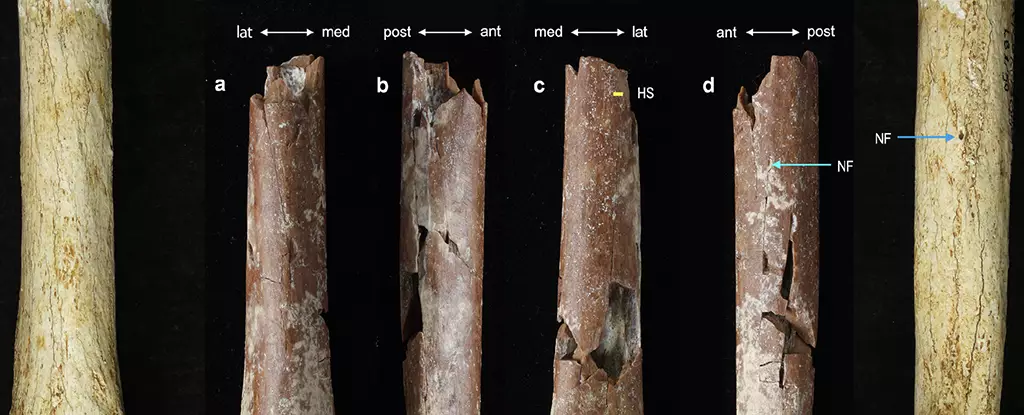The discovery of Homo floresiensis, also known as ‘hobbits,’ has fascinated scientists and researchers for years. Recent findings have shed new light on just how small these ancient human relatives were, challenging previous assumptions and expanding our understanding of human evolution. A 700,000-year-old humerus fragment unearthed in 2013 has provided valuable insights into the unique characteristics of these diminutive beings, suggesting that they may have been even smaller than previously believed.
Uncovering the Smallest Hominin
The humerus fragment discovered on the Indonesian island of Flores is the smallest upper arm bone ever found in the hominin fossil record. Despite its size, researchers have determined that it belonged to an adult individual based on microscopic analysis of the bone’s structure. The presence of osteons, which change in size and arrangement as a bone matures, indicated that the individual was fully grown at the time of death. Estimates suggest that the owner of this humerus stood at a mere 1 meter tall, making them even smaller than the well-known H. floresiensis specimen found in Liang Bua cave in 2003.
The discovery of the tiny humerus fragment has forced scientists to reconsider the evolutionary history of Homo floresiensis. Previous theories suggested that these miniature humans descended from a population of Homo erectus from Java. However, the unique characteristics of the Mata Menge fossils challenge this view, hinting at a more complex and intriguing ancestral lineage. The presence of small teeth at the site further supports the idea of a distinct population of small-statured humans that evolved in isolation on the island of Flores.
The isolation of Homo erectus on Flores may have played a crucial role in the development of Homo floresiensis. Researchers speculate that these early Asian hominins became stranded on the island around one million years ago, leading to a gradual reduction in body size over generations. The evolution of small stature among the Flores ‘hobbits’ may have been a response to the unique environmental challenges they faced on the isolated island. This phenomenon mirrors similar trends seen in other island-dwelling species, where small body size confers advantages in resource-scarce habitats.
Despite the valuable insights provided by the Mata Menge fossils, many questions surrounding the evolutionary history of Homo floresiensis remain unanswered. The exact relationship between the Flores ‘hobbits’ and modern human populations in Indonesia is still unclear, raising intriguing possibilities for further genetic and archaeological studies. Continued research on the unique characteristics of Homo floresiensis will undoubtedly contribute to our ever-evolving understanding of human evolution and the diverse paths our ancient ancestors followed.
Overall, the recent discovery of the tiny humerus fragment from Mata Menge offers a fascinating glimpse into the world of Homo floresiensis and their enigmatic ‘Hobbit’ ancestors. By pushing the boundaries of our knowledge and challenging existing assumptions, researchers are paving the way for new discoveries and insights into the complex tapestry of human evolution.


Leave a Reply